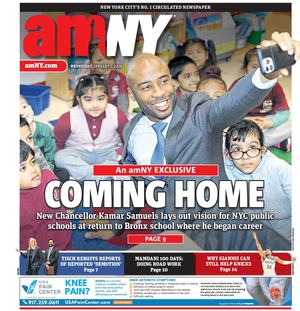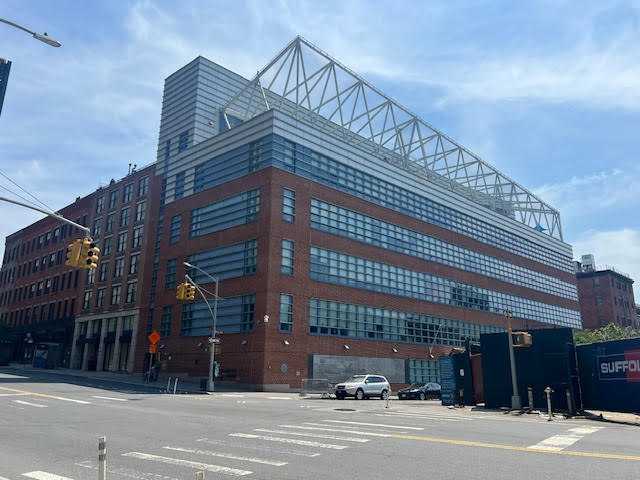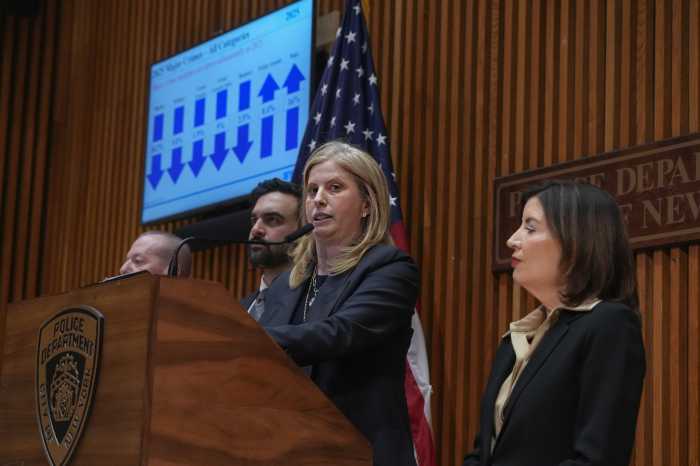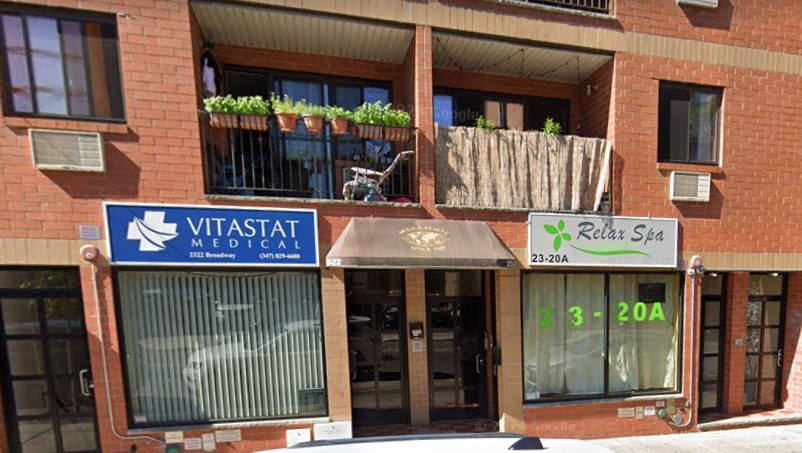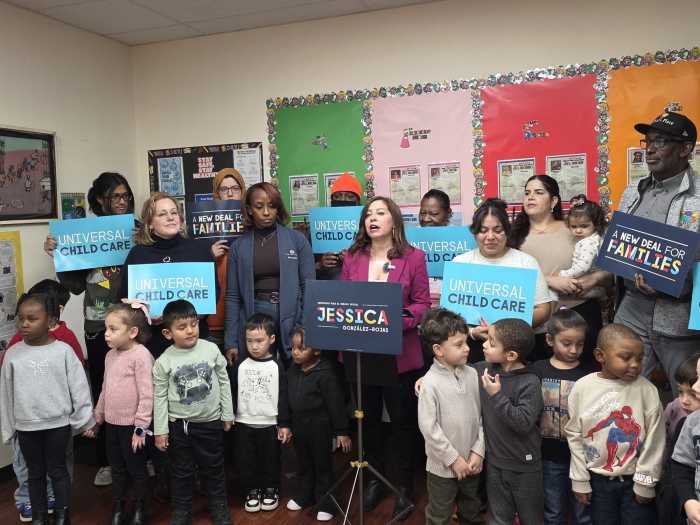Parents and other New Yorkers are outraged that NYC is planning to open a “low-barrier” homeless shelter that could possibly house substance-abuse users and sex offenders in a building attached to an elementary school in Lower Manhattan.
The NYC Department of Social Services (DSS) made what area residents are calling an “under the radar” and “reckless” move to open the controversial shelter this fall, at a former Hampton Inn hotel on 320 Pearl St. that abuts P.S. 343, the Peck Slip School, a public elementary and pre-K school with approximately 400 enrolled students.
According to community residents, DSS only notified the community board of the upcoming 106-bed, mixed-sex shelter on June 14 — when there were only a handful of days of the school year remaining, and half a year after the deal was made with the building’s owner, Slate Property Group.
“They basically gave no time to interact with the parents before the school year ended,” Adam Sinovsky, an area resident, said. “The parents and neighborhood feels this was done on purpose, to do it when school is out.”
Sinovsky is the board president of Southbridge Towers, residential buildings home to 2,900 residents located across the street from the planned shelter. He added that the community is concerned because the screening to reside at a low-barrier shelter is minimal— meaning, shelter providers could forgo criminal background checks on incoming residents.
“They will be accepting people who are severely mentally ill, that have drug addiction issues, are sex offenders,” Peggy Bilse, whose children attend P.S. 343, said. “This is in a building attached to an elementary school.”
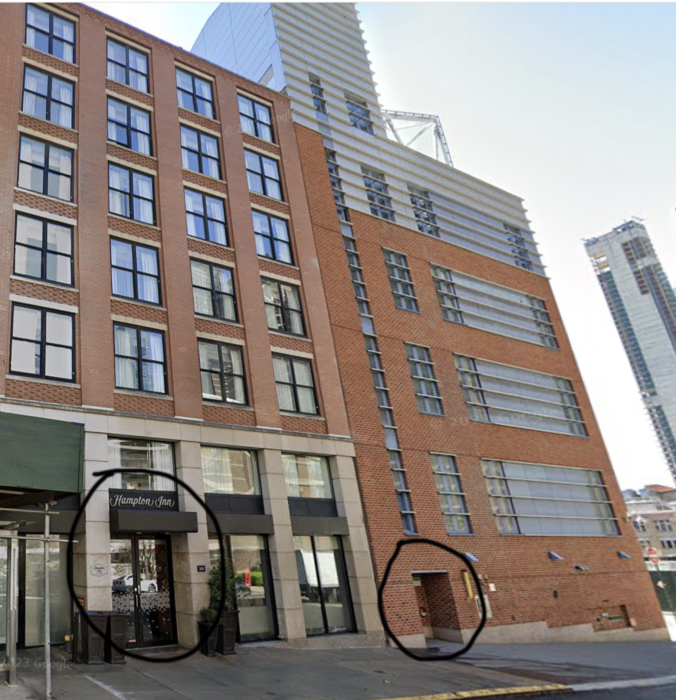
What is a ‘low-barrier’ shelter?
A low-barrier shelter is also known as a Safe Haven in NYC. The 320 Pearl St. site will be one of several other Safe Havens that already exist around the city, all designed to accept homeless New Yorkers who are hesitant or unable to accept traditional shelter options for a variety of reasons.
According to Breaking Ground, the nonprofit that will operate the shelter, Safe Havens are low-threshold resources.
“They have fewer requirements, making them attractive to those who are reluctant to accept shelter,” the organization’s website states. “There are no curfews and more privacy. A client can miss a night at the Safe Haven without losing her or his bed, as they would at a traditional shelter.”
A DSS spokesperson said the city needs to open a Safe Haven in this neighborhood because the area has been impacted by a higher incidence of unsheltered homelessness.
“Facilities like this have been instrumental in our efforts to help move vulnerable New Yorkers off the streets and subways and into shelter and permanent housing,” the spokesperson said.
He also said “no one with a residency restriction will be permitted to reside in this facility.”
But in New York, the Sex Offender Registration Act does not restrict where a registered sex offender may live unless he or she is on parole or probation.
Safe Havens are often the first step toward getting New Yorkers experiencing unsheltered homelessness “inside and back on the path to stability,” according to DSS.
According to the Coalition for the Homeless, homelessness in NYC has reached the highest level since the Great Depression. In April of this year, nearly 132,000 people slept each night in city shelters, according to the organization,
Sinovsky and Bilse spoke compassionately and said they understand the needs of vulnerable New Yorkers. Bilse said she is not opposed to a shelter in the area but stressed that it is “dangerous” to have low-barrier housing attached to a school.
“We’re not saying ‘not in our backyard.’ We understand that everyone deserves a home,” Bilse, who is on the executive board of P.S. 343, said. “What we are saying is not in a building attached to a school. The buildings are literally attached.”
The city plans to open the shelter this fall, just as the new school year begins. Although construction renovation is still in progress, the entrance to the shelter is on the same sidewalk just steps away from where children lineup each morning to attend class.
“Three-year-olds will be starting pre-k entering school, sharing the same sidewalk that the residents of the shelter will use,” Bilse said. It’s just not safe. It is ill-conceived, it is dangerous, and quite frankly, reckless.”
Manhattan’s Community Board 1, which covers the area, passed a resolution on June 25 opposing the shelter. DSS sent NYC Council Member Christopher Marte, whose district includes the area, a letter informing him of the planned shelter on June 13.
A spokesperson for the council member said Marte shares the community’s concerns, which also include a possible outdoor smoking area that would be located in a courtyard under the school’s vents and windows and direct views into the shelter’s rooms.
“None of these concerns, among others, have been addressed,” the spokesperson said. “Therefore, the council member does not support a Safe Haven at this site, but has made clear to the Adams administration that we are willing to work with them to find an alternative site in the district for a Safe Haven.”
Marte, alone with area residents, have suggested changing plans from a Safe Haven to a family shelter.
“We are also not against a shelter at this site, and there is support in the community to make this a shelter for families with children, something we have also advocated for,” Marte’s spokesperson aid. “The neighborhood has great schools, such as the Peck Slip School and Spruce Street School, with plenty of open seats, and other resources for families with children, which makes this site the perfect location for a family shelter.”
Read More: https://www.amny.com/news/
